
views
Preparing to Float on Your Back
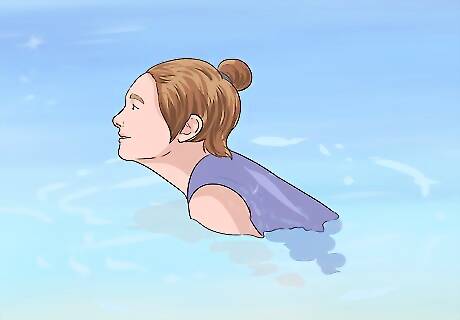
Be comfortable in the water. To be able to float on your back without panicking, you should be calm and relaxed in the water, even if you're not an expert swimmer. You should learn how to float on your back in a swimming pool, not an ocean or a lake with waves. Ideally, you should be reasonably comfortable in water and know how to swim from one end of a pool to the other without needing any help. If you're floating on your back as a way to learn how to swim, then you should take extra caution and be with your spotter at all times.
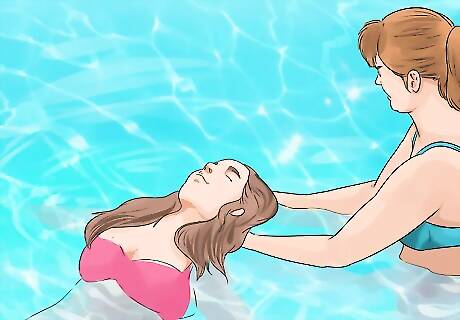
Get a spotter. Don't try to float on your back by yourself for the first time. Even if you've mastered other basic swimming techniques, if it's your first time trying to float on your back, you should not only have a spotter, but make sure that you're in a place with a lifeguard that can come to your rescue if you need the help. The spotter will place his hand under your back and will let you make the necessary adjustments to your body until you're comfortable trying the technique on your own.
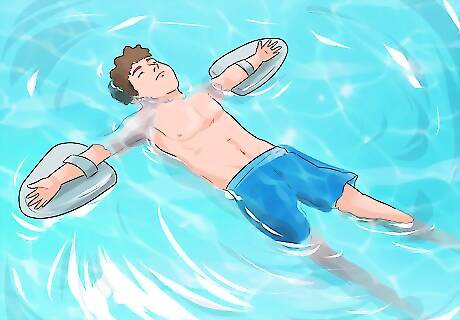
Try using a flotation device. Using a PFD (personal flotation device) around your arms or mid-section can also make you get more comfortable in the water. If you've worked with a spotter but aren't quite ready to try floating on your back on your own, try wearing the device until you wean yourself off of it.
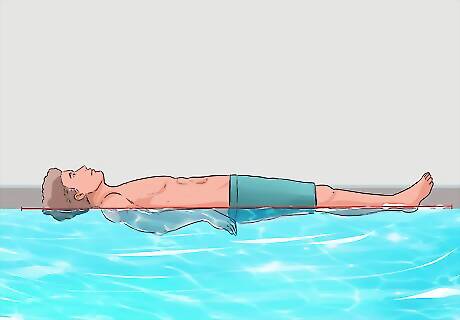
Align your body with the surface of the water. Before you begin to float on your back on your own, you need to align your body with the water -- ideally, your body should start off in a position that is almost parallel to the water or bottom of the pool. You can even get on your back and kick off the side of the pool until your body naturally glides with the surface of the water. Once your body is aligned with the surface of the water and your back is relatively parallel to the water, it'll be much easier to make adjustments to the rest of your body.
Adjusting Your Head
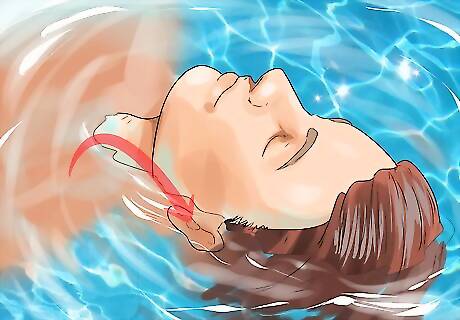
Place your ears in the water. Though it may not feel comfortable to place your ears in the water at first, just tip back your head until your ears are completely submerged. If your ears are out of the water, it means that your neck will be straining and that your body will be able to float less easily.
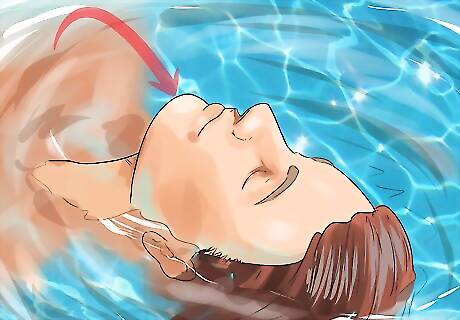
Lift your chin. Once your ears are submerged, lift your chin. You can lift it slightly, just an inch or two out of the water, or even lift it much more, so that it's pointing up toward the ceiling or sky. This will help you tip back your head and will make your entire body more buoyant.
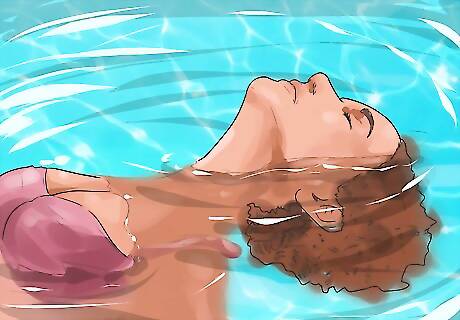
Make sure the water line is at mid-cheek. As you place your ears underwater and begin to lift your chin, make sure that the water line is at mid-cheek. It may be slightly lower if you raise your chin more dramatically.
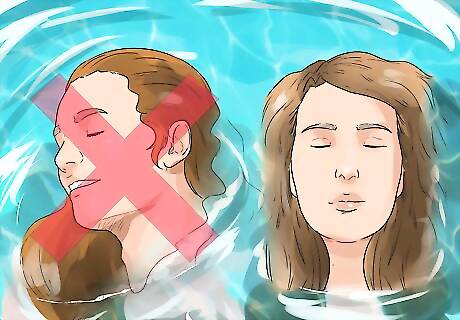
Stay centered. Keep your head centered so you don't tilt to one side or the other. Keeping your head centered will keep the rest of your body centered.
Adjusting Your Body
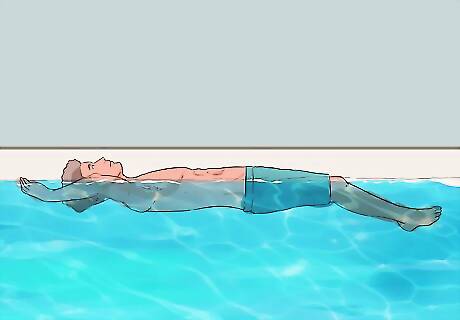
Position your arms correctly. There are a few ways to position your arms when you're floating on your back. If you're an absolute beginner, you can bend your arms at the elbows and place your palms under your head as if you were doing a sit-up, and then bend your elbows back to force your body to tilt upwards even more. Here are some other things to try as you position your arms: If you're more comfortable in the water, you can move your arms straight behind your head, mimicking the diving position, which will change your center of buoyancy and will balance out the weight of your legs more. You can also move your arms straight out or even keep them just a few inches away from your sides. Whatever you do with your arms, make sure that your palms are always facing the ceiling or sky.
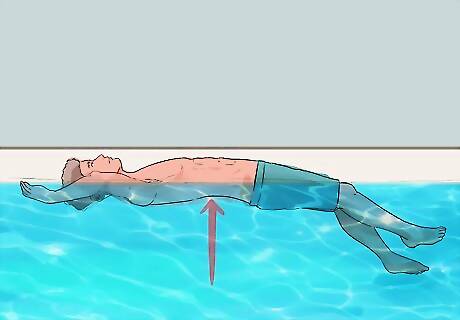
Arch your back slightly. This will help you tilt your body upward. Just arch your upper back a few inches upward.
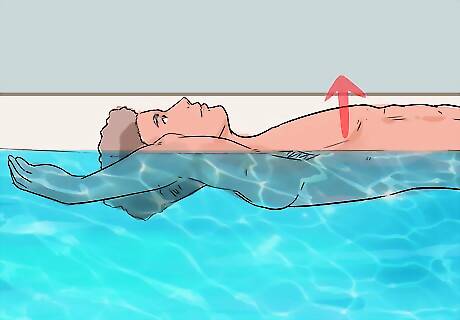
Lift your chest. As you arch your back, lift up your chest more so it's out of the water.

Lift your stomach. You should also actively lift your stomach until your mid-section breaks the surface of the water.
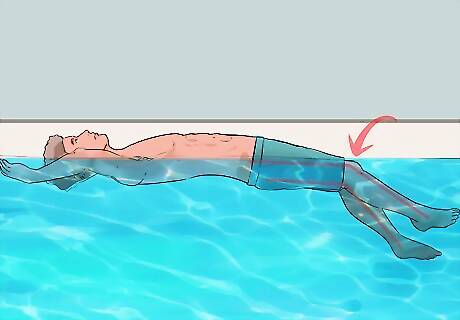
Bend your knees. Bend your knees to open up your legs a bit. If your legs are completely straight, you'll be more likely to sink.
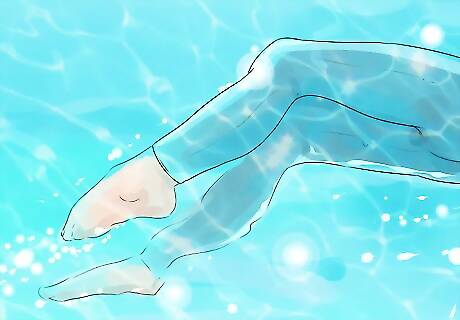
Let your legs dangle down. After you bend your knees, let your legs dangle down on either side, with at least a few feet of space between them. Your legs won't naturally float to the top of the water. For many adults, the legs are heavier than the arms and upper body, so the legs may naturally float downward. This may be different for small children, who don't have muscular legs.
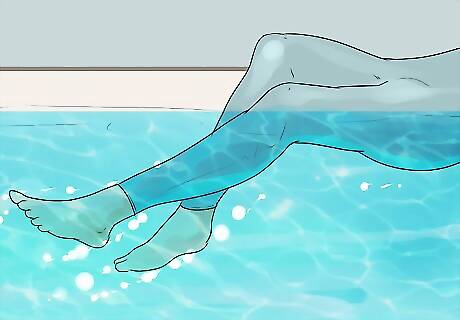
Kick your legs (if necessary). If you do feel your body floating downward near your legs, just take small kicks with your legs to keep your body afloat. You can float on your back and then take the kicks whenever you feel your body shifting downward, or just continually lightly kick your legs to avoid the downward shift. Guide friends through key adjustments for success. "Floating came intuitively to me, but teaching friends required step-by-step specifics. Outlining how to adjust limbs, arch back, and kick feet gave them a precise blueprint to successfully stay afloat!" - Nora W. Adjust angles for easy buoyancy. "When learning to float, spotters just said, "Arch your back" without specifics. Tweaking angles like ear position, chin lift, and more let me align better with the water's surface. Now I stay afloat!" - Guneswary T. Visualize lessons through step-by-step images. "Taking swimming classes, I struggled picturing techniques from verbal explanations alone. Step-by-step drawings matched my lessons, helping me visualize positioning. Things clicked faster, grasping techniques visually before trying them." - Ajay T. Tune body and mind for fluid floating. "I appreciated the guidance on how subtle shifts create better alignment for floating. By tuning into my body more, I learned how small tweaks, like lifting my chin, change buoyancy dramatically. Floating feels effortless now that my body works with me." - Vinay A. Did you know that wikiHow has collected over 365,000 reader stories since it started in 2005? We’d love to hear from you! Share your story here.
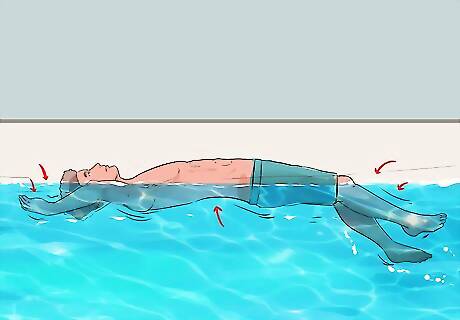
Make small adjustments. As you continue to float on your back, listen to your body and see if it's sinking in any place. Continue to kick your feet if you're sinking down near the feet and legs, and gently move your hands and arms in the water if you feel that your upper body is getting out of position. You can also try lifting your chin higher or arching your back a bit more to make your body more buoyant. If you get out of floating position, just align your body with the surface of the water and try again. Learning to float on your back takes time.



















Comments
0 comment